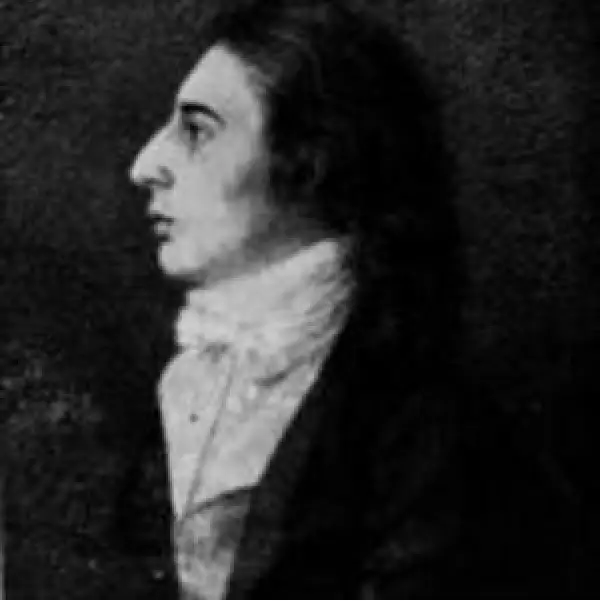This article describes to Mary Wollstonecraft poem analysis & summary
Robert Southey is a poet and a poet laureate of 19th century British society. He is inspired by co-writers of his age such as William Wordsworth and Samuel Taylor Coleridge.
Coleridge titles him as the complete man of letters. Southey’s proses are more popular than his verses.
Mary Wollstonecraft is a feminist English writer and novelist of the romantic age. Her personal relationships were more famous than her writings in that contemporary society.
Certainly, Letters Written During a Short Residence in Sweden, Norway, and Denmark, written by Mary Wollstonecraft in 1796 is the best and most famous description of Denmark during the Romantic period.
Robert Southey has mentioned that this book made him ‘fall in love with a cold climate & frost & snow, with a Northern moonlight’. Later on, Wollstonecraft’s future husband, William Godwin, writes about this ‘if ever there was a book calculated to make a man in love with its author, this appears to me to be the book’.
Previously, Southey is politically engaged with feminism. After meeting Mary Wollstonecraft he encountered in London among the radicals in 1797.
He writes the sonnet To Mary Wollstonecraft which is published in his 1797 work Poems. Many of his works were categorized as feminist works for their promotion of women’s liberty and rights.
Robert Southey and his wife frequently have dined with William Godwin and his wife, Mary Wollstonecraft. Southey is captivated by Wollstonecraft’s charm, although he did not think much of her husband William Godwin.
Robert Southey is a very flirtatious person. Although Southey’s heartfelt emotions for Mary Wollstonecraft is almost platonic. He is pretty much in love with Mary Wollstonecraft.
Twenty-three years old, Southey is completely flattered by the thirty-eight years old lady, Mary Wollstonecraft. Undoubtedly, Southey is infatuated by the beauty of Mary Wollstonecraft.
Southey says dedicating Mary Wollstonecraft, ‘she is a first-rate woman, sensible of her own worth, but without arrogance or affectation.’ Here is an early sonnet dedicated to her.
Southey’s marriage is very much grudged by his aunt. She has brought him up. To repair the breach he accompanies his uncle on a political engagement to Spain later in 1795.
While being there in Spain he engaged in a deep study of the pieces of literature about the Iberian peninsula that would be reflected vividly for years in multiple of his literary works.
He turns his original experience to amazing practical filter, writing a work whose title reflects the sheer potential of Mary Wollstonecraft.
To Mary Wollstonecraft analysis
Robert Southey a poet and Poet Laureate of the romantic era in England has composed a sonnet dedicating Mary Wollstonecraft. The sonnet, To Mary Wollstonecraft, has been published in 1797.
He has been captured by the charm of Mary Wollstonecraft despite the presence of her husband. In his sonnet, he has described the beauty of the gorgeous lady, Mary Wollstonecraft.
The poet in the very first glorifies her cheeks and eyes with vivid adjectives. Robert Southey expresses his intense feelings for Mary Wollstonecraft through his sonnet.
He has offered the subject of his infatuation, a great compliment. The sonnet ends with some deep meaningful and beautiful words dedicating Mary Wollstonecraft.
To Mary Wollstonecraft has been composed using closed rhyming couplets. The rhyming scheme is abccddba. This sonnet contains thirteen lines in strings and written in closed metre, iambic pentameter.
The poem has only one stanza and this is little in size considered to be a sonnet. It is supposedly formed using heroic couplets.
Robert Southey composed a very symbolic sonnet. The collection of symbols in this sonnet is vivid.
It has almost five hundred and forty-one symbols in one stanza. In total it consists of average ninety-three words in the whole poem of thirteen lines.
All the thirteen lines have formed with approximately seven words.
The sonnet has been written by Robert Southey with widely and various punctuation marks. These punctuation marks are not predominating.
The author used lexical repetitions to emphasize a significant image of Mary Wollstonecraft. There is a repetition of this method.
Poet Robert Southey has repeatedly used the same word.
He used anaphora at the beginnings of some neighbouring lines.
To Mary Wollstonecraft Poem
To Mary Wollstonecraft is a sonnet composed by Robert Southey addressing Mary Wollstonecraft. The poem has one stanza of thirteen lines and five hundred forty words with various symbols.
Robert Southey has the kind of platonic love for Mary Wollstonecraft and categorised his feelings as some sort of infatuation about her.
‘The lilly cheek, the “purple light of love,”
The liquid lustre of the melting eye,—
Mary! of these the Poet sang, for these
Did Woman triumph! with no angry frown
View this degrading conquest. At that age
No MAID OF ARC had snatched from coward man
The heaven-blest sword of Liberty; thy sex
Could boast no female ROLAND’S martyrdom;
No CORDE’S angel and avenging arm
Had sanctified again the Murderer’s name
As erst when Caesar perished: yet some strains
May even adorn this theme, befitting me
To offer, nor unworthy thy regard.’
